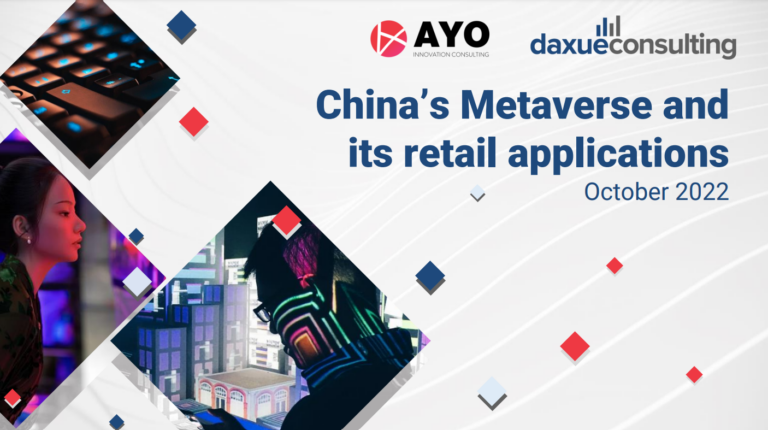Deployment of blockchain technologies
The next guest on Daxue Talks is China’s fintech specialist, Steve Hopkins. In this China business vlog, we are talking about the deployment of blockchain technologies by Chinese banks.
Full transcript below:
Hi everyone, my name is Steve Hopkins. I’ve been operating within the Chinese fintech industry for the past several years, working at Chinese hedge funds, robo-advisors, cryptocurrency investment banks and wealth-tech start-ups across Mainland and Hong Kong. I’ve been studying Chinese language and culture for the past 10+ years and I’m the co-founder of The China Guys. TCG is a firm full of professional Chinese watchers that track regulatory, economic and policy optics within China’s business landscape and present them indigestible bite-sized pieces through newsletters and research articles. For clients with more specialized needs, we also provide tailored consultative services within the Chinese market. We’re newly started but I would love it if anyone listening to this would check us out at TheChinaGuys.com. I’m excited to be presenting this talk for Daxue Consulting and let’s get started.
Deployment of blockchain technologies
Hhow is blockchain currently being used in China’s banking sector?
Right, so obviously the Chinese government on both a national and a provincial level have doubled down on their focus, on their priority to the continued development of blockchain technology. And so, because of that there’s really been developments in just about all fronts of the financial industry with regards to blockchain technology, from cross border payments and trade finance to asset management or wealth tech as you might have heard it be called and supply chain finance. And so, a common example to go to is the PBOC’s – the People’s Bank of China – their efforts to develop a digital currency tied to the value of the RMB. But a lesser-known use of blockchain technology is for the industry called Supply Chain clients and I think it’s actually pretty interesting and something that hasn’t got as much press as the digital RMB so I’ll give that as an example from now.
So within supply chain finance, there is a huge issue that there is a lack of reliable and transparent methods for SME’s deep within a large corporation supply chain to access liquidity through loans, through factoring, any sort of financial services like that and so right now, the banking arm of Pingan’s insurance has an interesting solution that they’ve taken to approach this issue. They’re using blockchain technology to track transactions deep within corporate supply chains, to allow smaller SME suppliers to use the reputation of these larger corporations to access liquidity and I’ll explain what all of this means.
So, let’s put some names to this example. You have a well-known auto manufacturer, let’s say Nissan Motors. Nissan is what’s known as the anchor corporation or the top-level company that’s coming out with the final product and is at a level of operations that a lot of these financial institutions trust that they’re going to pay their debt obligation. So basically, if Nissan says yes, I owe you 10 million dollars, they’re going to be good to uphold that IOU.
But Nissan has – to assemble a single automobile; there are multiple tiers of suppliers that they source all of their materials from. From tires to windows to auto chassis. So, let’s chase that out a little bit.
The chassis manufacturer that Nissan is supplying from, also have multiple suppliers that they’re sourcing their fittings from, those suppliers will have suppliers that they source their sheet metal from and it goes on and on. So, realistically if you chase this out, for all the components that are needed for Nissan to create a single car, you’re looking at a pretty tangled web of very deep tier suppliers that typically get smaller and smaller and smaller in operations the deeper that you go within the supply chain.
So, bringing this back to what Pingan’s doing, what a blockchain-based supply chain finance platform can do, is provide the infrastructure for an ecosystem where all these suppliers can be onboarded and the flow of goods and transactions from bottom to top can be tracked and verified. And so, at the end of the day this sheet metal supplier from our example, can go to a financier – let’s say HSBC and basically take the IOU’s that Nissan has transferred down throughout its supply chain from Nissan to that auto chassis supplier, to the sheet metal supplier and they’ll be able to take it to HSBC and say I’ve received this IOU from Nissan for 10 million dollars and because they have all these verifiable records of the movement of these goods and transactions, HSBC’s risk of saying yes and providing that money upfront to these smaller SME’s is very much lessened and so because of that they can cash out these IOU’s and provide these SME’s much easier and reliable access to capital as a result.
So again, this is just a very long and drawn-out example of the power that blockchain technology can bring and particularly the diverse used cases of blockchain technology within the banking sector, not only in China but within the global financial system.
Any questions? We will find an expert to answer them. Drop your questions in the comments or send us an email – dx@daxueconsulting.com.





